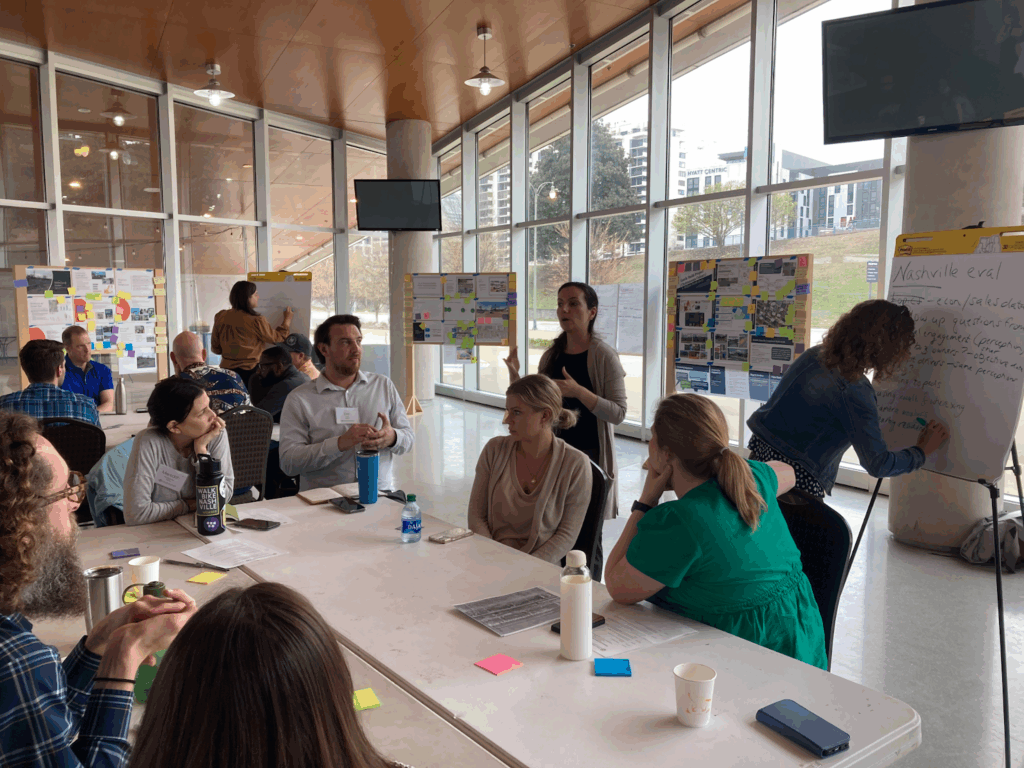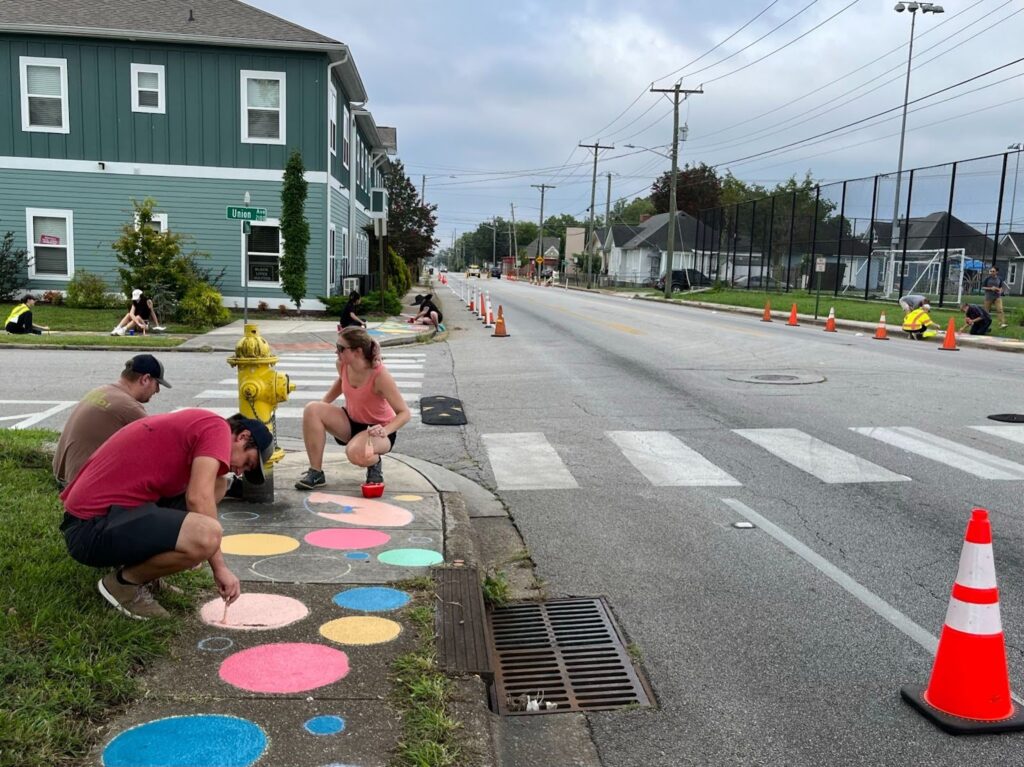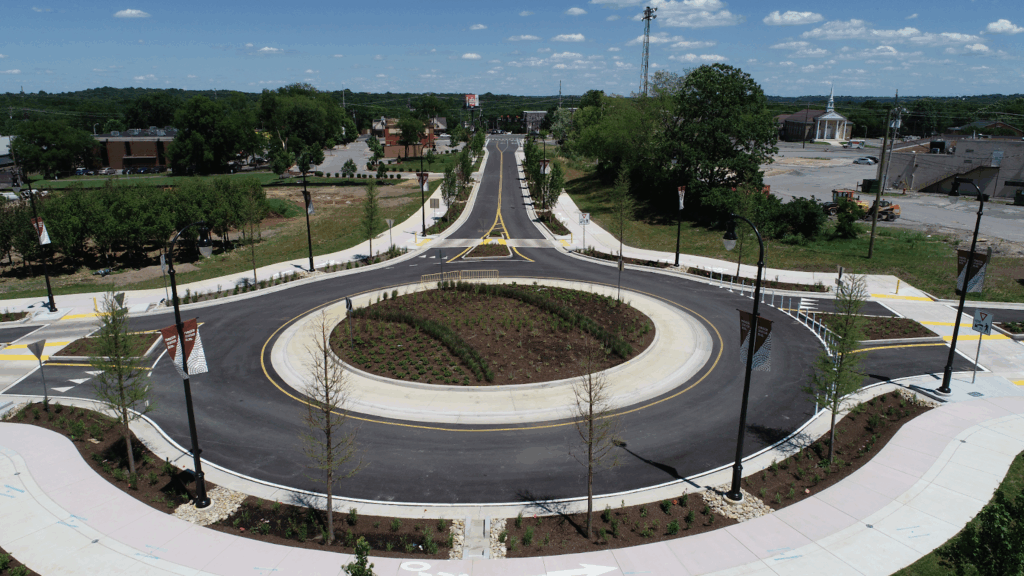
News
By Raveena John, July 18, 2025
Tennessee’s participation in the 2023 Complete Streets Leadership Academy sparked a wave of lasting change. From local safety demonstrations to statewide research and implementation, the Tennessee Department of Transportation (TDOT) has been partnering with decision-makers in Chattanooga, Memphis, and Nashville to continue the momentum in making safer streets for everyone.
Background
SGA’s Dangerous by Design report found Memphis to be the deadliest metro area for pedestrians, based on fatality rates from 2018 to 2022, and Tennessee the 11th most dangerous state. In 2023, TDOT worked with the city governments of Chattanooga, Memphis, and Nashville to install quick-build demonstration projects on state–owned roads with support from Smart Growth America’s CSLA. Prior to the CSLA, TDOT had been implementing a Pedestrian Road Safety Initiative (PRSI) to address dangerous crossings with safety countermeasures like pedestrian hybrid beacons, refuge islands, and other interventions. These projects took around three years to design and install, and Tennessee communities urgently needed safety improvements with a faster turnaround, making quick-build demonstration projects a good fit for TDOT’s safety effort toolkit.
Pedestrian hybrid beacons are a traffic control device to help people cross mid-block. The beacons above the roadway are dark until someone crossing the street pushes a call button, then the lights flash yellow to catch the attention of drivers, then red to require drivers to stop. Learn more here >> Refuge islands are medians between lanes of traffic built for people to feel more comfortable when crossing. Islands reduce the exposure of pedestrians to moving traffic and can help people cross multiple lanes. Learn more here >>
CSLA quick-build demonstration projects
Through the CSLA, the city teams chose temporary projects that held promise for long-term, permanent improvements, like corridors slated for PRSI improvements, while developing pathways for other demonstration projects. In Chattanooga, improved crossings, a temporary refuge island, and paint on sidewalks made it safer for people to cross the road by catching the attention of drivers and demonstrated that a quick-build project can be effective on a small state road. Memphis’s project site was anticipating a permanent pedestrian hybrid beacon through PRSI, so their quick-build project used a plastic pedestrian refuge island as a temporary improvement. Once the permanent island was installed, the city would be able to reuse the plastic refuge island elsewhere for future quick-build projects.

The Nashville team selected Dickerson Pike as their project site because it was the most dangerous corridor in Tennessee for people walking and biking, based on TDOT data. A lot of organizations were already aware of the safety issues at this site and were ready to work together on this project. Nashville and TDOT worked with the Civic Design Center for quick build experience, WalkBike Nashville for design concepts, the artist Charles Key for murals, and the Tennessee Department of Health for additional funding to support the project. Marking crosswalks, adding a pedestrian island, and delineating driveway entrances through the quick build reduced speeds and crashes at the site and improved the yield rate of drivers waiting for pedestrians to cross, based on data collected by the city. This demonstration project is still in the ground today as the city completes designs for permanent improvements.

Building on the momentum
TDOT, Nashville, and other partners are keeping the momentum going from the 2023 quick builds in a variety of ways. TDOT is working with researchers at the University of Tennessee, Knoxville, part of the Center for Pedestrian and Bicyclist Safety, to develop statewide guidelines for quick-build projects. These guidelines will be based on best practices identified from a literature review and from ongoing demonstration projects by the city of Knoxville. Knoxville’s quick-build projects are part of the city’s Vision Zero program and the safety outcomes will be included in the statewide guidelines, as a way of front-loading data collection. The statewide guidelines will be for city staff to navigate two tracks: one to install quick builds on local roads and another for quick builds on state roads. The state road guidelines will use TDOT’s existing approved materials list to provide an easy reference point of materials and designs for safety improvements. The local road guidelines will be more flexible for cities to install creative safety projects and will be especially helpful for smaller cities without transportation staff. This guide will also be a useful reference for TDOT engineers to feel confident in knowing what to do when a city proposes a quick-build project on a state route. As quick-build projects are installed, the guide can be updated to reflect lessons learned in the process.
Nashville is continuing their pedestrian safety work by installing permanent safety improvements at the Dickerson Pike intersection. The permanent project will include a pedestrian signal for safer crossings and artistic sidewalks that catch the attention of drivers and keep the celebratory feeling of the quick build art. The quick-build project helped city engineers estimate the cost of a permanent project, which allowed the city to quickly identify funding opportunities for the full build. Nashville’s ongoing work includes a Complete Streets policy update and implementation guide, which scored second in SGA’s 2025 Best Complete Streets Policies Report, a series of trainings on Complete Streets topics, and quick-build projects in school zones and high-injury intersections.

The quick-build action doesn’t stop there, as regional organizations have gotten involved as well. The Greater Nashville Regional Council (GNRC) supports local communities across fourteen counties in central Tennessee with planning and program development, including transportation. GNRC received a 2024 USDOT Safe Streets and Roads for All planning and demonstration grant to conduct quick-build demonstration projects and develop a safety action plan for the region. The structure of the action plan and the lessons learned from the quick builds can be used by smaller jurisdictions in implementing their own safety improvements. Between GNRC, Nashville, Knoxville, and TDOT, Tennessee has many more quick builds to come!
Thanks to Anna Dearman from Nashville Department of Transportation & Multimodal Infrastructure, Daniel McDonnell and Will Rogers III from Greater Nashville Regional Council, and Dr. Chris Cherry from University of Tennessee, Knoxville for their insights.
This publication was made possible by the Centers for Disease Control and Prevention (CDC) (Cooperative Agreement CDC-RFA-PW-24-0080). Its contents are solely the responsibility of the authors and do not necessarily represent the official views of CDC. These efforts are part of the CDC’s Active People, Healthy NationSM Initiative that is working to help 27 million Americans become more physically active by 2027.
Related News

© 2025 Smart Growth America. All rights reserved
Site By3Lane Marketing
















